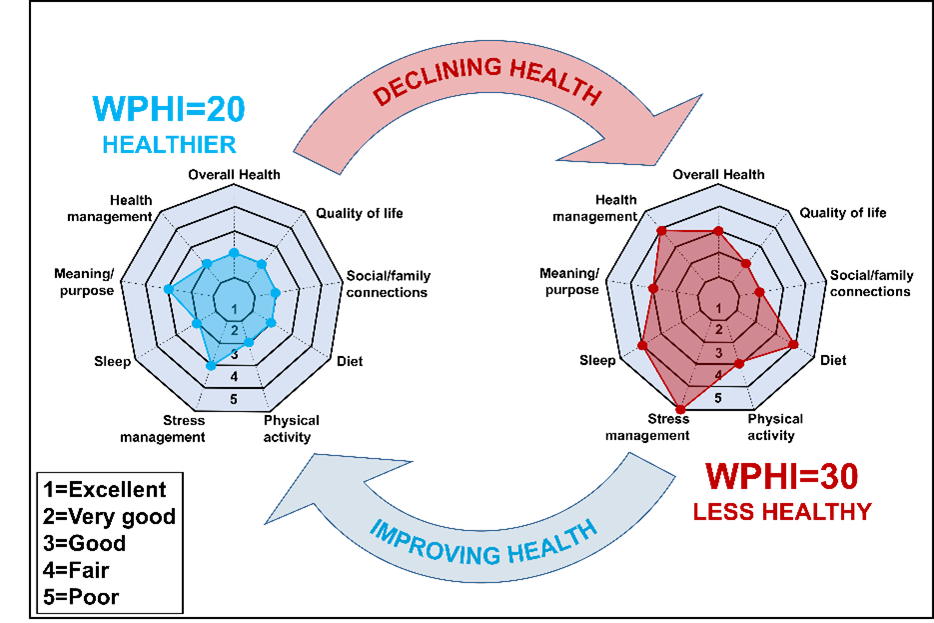The Whole Person Health Index: A New Tool for Human Mechanistic and Clinical Studies
The Whole Person Health Index is a new tool for human mechanistic and clinical studies.
In human mechanistic and clinical research, the importance of valid, reliable measurement tools to track an individual’s health trajectory over time—assessing improvement or decline—cannot be overstated. Many current clinical measurements focus narrowly on specific organ functions (like blood pressure) or symptoms (like pain), reflecting an approach to health care traditionally organized around distinct diseases affecting different body systems. A major hurdle to research on integrative health has been measurement: How can we reliably assess and consistently track the health of the whole person over time?
The National Center for Complementary and Integrative Health (NCCIH) champions a whole person approach characterized by support for a healthy lifestyle and promotion of positive health processes spanning across multiple body systems.
NCCIH and the National Center for Health Statistics at the Centers for Disease Control and Prevention (NCHS/CDC) have developed the Whole Person Health Index (WPHI). The WPHI comprises the following set of nine validated, self-reported questions covering major domains of health.
Whole Person Health Index (WPHI)
Rate on a scale of 1–5 (1=Excellent, 2=Very Good, 3=Good, 4=Fair, 5=Poor)
- Would you say your health in general is excellent, very good, good, fair, or poor?
- How would you rate your quality of life, focusing on what matters most to you?
- How would you rate your social and family connections?
- In general, how healthy is your overall diet?
- How would you rate your physical activity, compared with people in your age group?
- How would you rate your ability to manage stress?
- How would you rate your sleep?
- How would you rate your ability to find meaning and purpose in your daily life?
- How would you rate your ability to manage your health, focusing on aspects of your health that matter most to you?
The WPHI is free to use and is set to be deployed in the 2025 National Health Interview Survey, as well as the All of Us longitudinal cohort. The WPHI can be calculated by summing the nine response scores. For example, an increase of WPHI from 20 to 30 would indicate worsening health, and a reduction from 30 to 20 would indicate improvement in overall self-assessed health.

We encourage investigators to use the WPHI as a secondary outcome in research involving human participants, be it a longitudinal observational study or a randomized clinical trial. The WPHI may be particularly valuable in studies evaluating the effects of nonpharmacologic nutritional, psychological, and physical interventions, especially when used in combination. While such interventions often have small-to-medium effect sizes when assessed using a single primary outcome (e.g., pain), they may also exhibit many modest effects across multiple secondary outcomes (e.g., sleep, physical function, quality of life). Using the WPHI as an integrated measure may reveal important additive benefits of these interventions on the health of the whole person.